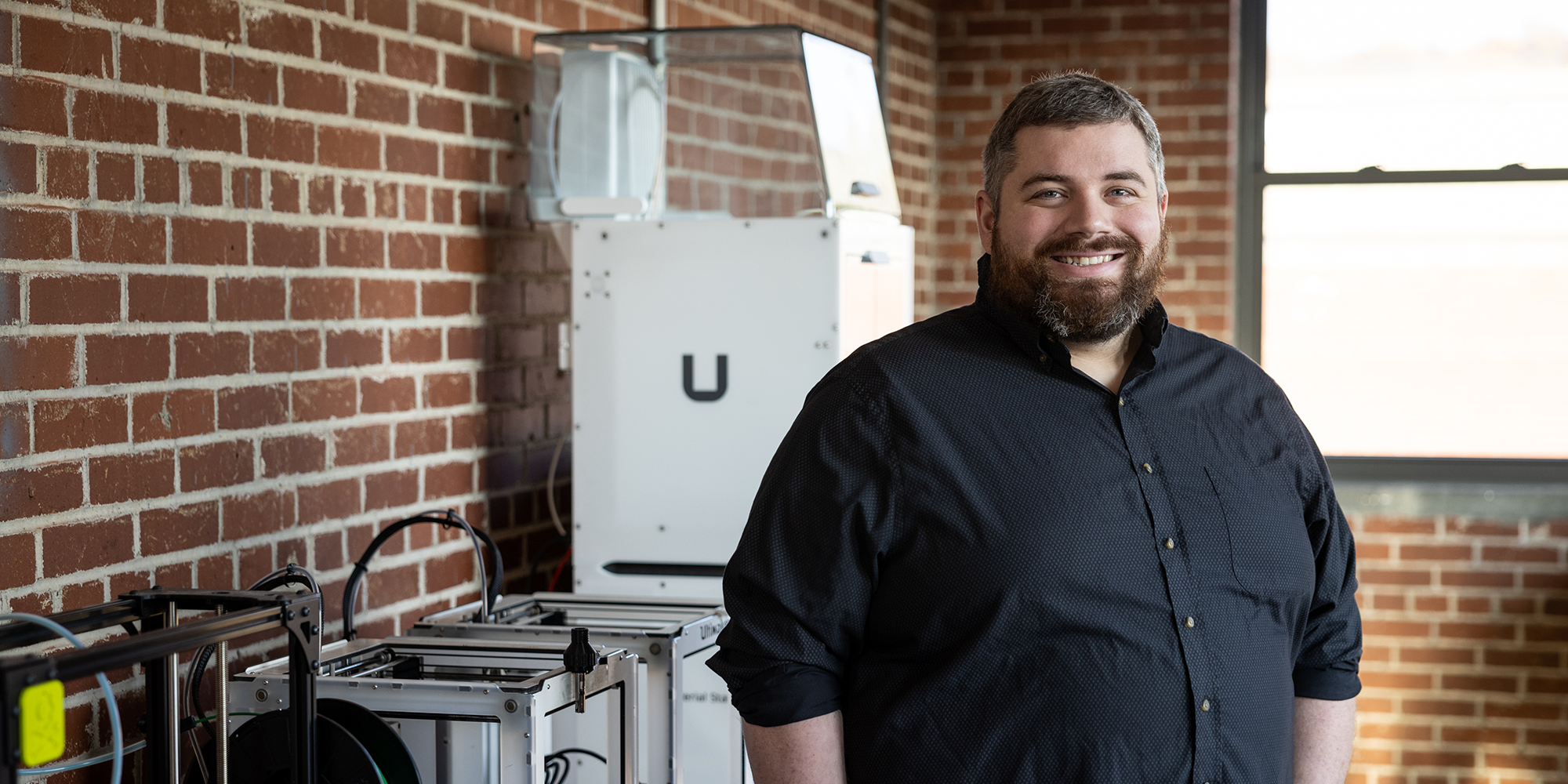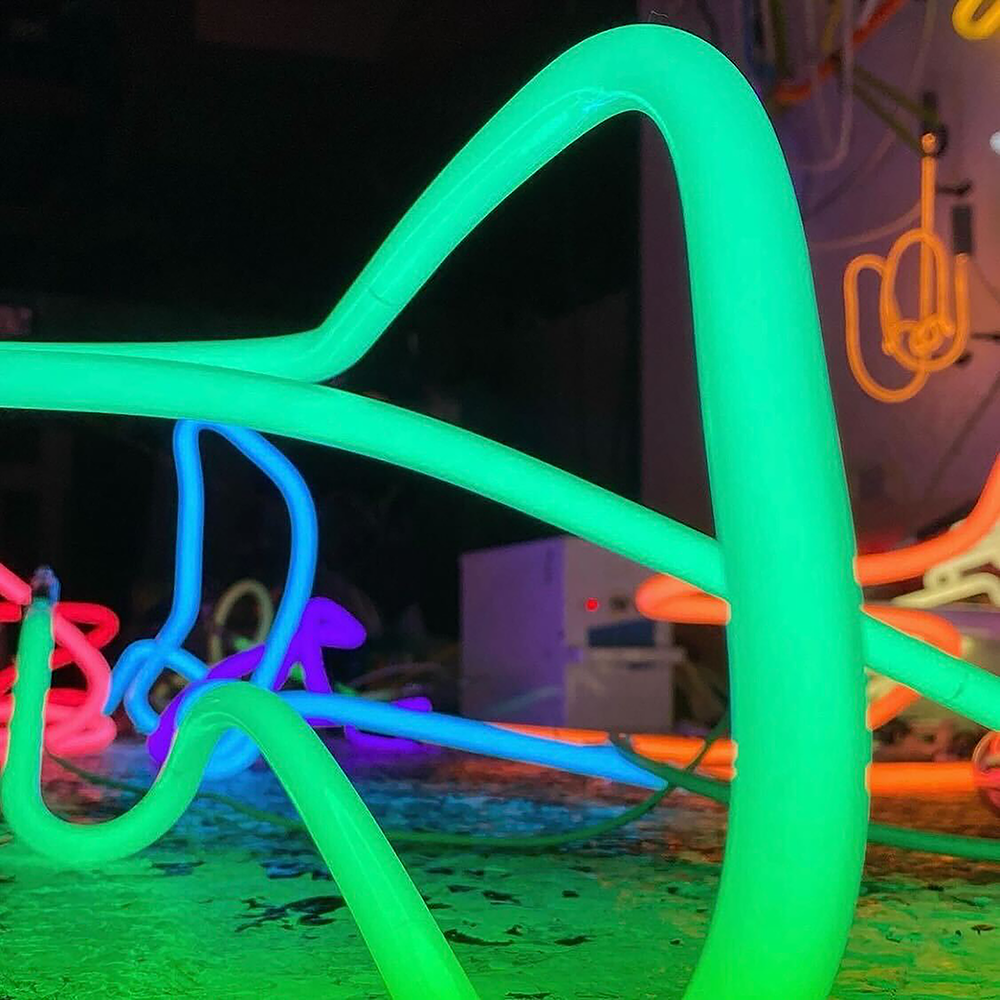CREATIVE TECHNOLOGIST JOHN MARS ON RICK AND MORTY, STAYING INSPIRED, AND SINGING
WITH BEYONCÉ.
Growing up, John Mars “always had a foot in both creative and tech worlds.” He is Technology Director, Creative Technology here at Deeplocal and holds degrees in architecture from RISD and Tangible Interaction Design from Carnegie Mellon University. John’s portfolio includes experience at Disney Research, building portals to other dimensions, telling stories using motion-tracking and VR, and securing a patent for mixed-reality haptics.
WHAT IS YOUR ACADEMIC BACKGROUND AND HOW DID YOU END UP AT DEEPLOCAL?
I grew up in upstate New York, and I originally went to college for architecture—Drexel for a couple of years and then transferred to RISD, where I finished up my degree. Towards the end of that, I started getting more into software. My father’s a technology shop teacher and my mother’s a music teacher, so I’ve always had a foot in both the creative and tech worlds.
I did a couple internships at architecture firms during undergrad, which were very insightful and made me realize it was going to take a while before I was actually designing cool buildings, and not just doing details in closets and stuff like that. So I redirected my focus towards creative software, while still applying my architectural and design background.
I came to Pittsburgh for my master’s degree in Tangible Interaction Design at CMU. During that time, I ended up at Walt Disney Imagineering Research; one of my instructors liked what I was doing in school and advocated to bring me over as an intern and eventually a Research Associate. There, I helped create “Magic Bench,” a mixed-reality and haptic experience where guests interact with animated characters. We ended up getting a patent for it, too! I also created and installed a pair of 8-axis hybrid robo-puppets for haptic and safe human interactions.
I had known about Deeplocal for a few years, since it was a pretty big deal in the Pittsburgh tech bubble, and I knew a few people that worked there. When the Disney Research offices closed, I did a freelance project, then applied and transitioned here.
IN YOUR OWN WORDS, WHAT IS A CREATIVE TECHNOLOGIST?
Are you familiar with maker spaces? Those workshops with laser cutters and mills and woodworking tools and 3D printers and electronics workbenches and sewing machines and painting booths and computer labs? I think we’re the human embodiment of maker spaces. So, like the guys from MythBusters, but we work in marketing.
WHAT ARE THE TOOLS YOU USE MOST OFTEN FOR YOUR JOB?
Creative Technologists are generalists in a lot of things. It can be anything from software to fabrication to electrical engineering, but some people are more specialized. I like to call myself a “creative generalist,” but I’m fairly focused on the software side and do a lot of high-level architectural oversight and writing code that connects physically disparate things.
In terms of specific programs, I’ve been doing a lot of work lately with web technologies, Unity, and TouchDesigner, although the specific tools I use depend on the project. Being able to pick up anything quickly is a very beneficial skill to have.
IS YOUR JOB WHAT YOU IMAGINED IT WOULD BE?
I think so! I’ve always generally kind of known what I wanted to do professionally (which is really just “make awesome stuff”), and went with the flow whenever a unique opportunity presented itself in that realm—it ended up landing me in what might be the only place in the world where someone with my background and skills can utilize all of them. I get to work with literally the most talented people in existence on some of the most unique projects ever dreamed of, and I couldn’t be happier about it.
WHAT IS A PROJECT YOU’VE WORKED ON THAT YOU’RE ESPECIALLY PROUD OF?
The Rick and Morty project we did for Comic-Con a couple years ago with Adult Swim. We made physical “portals” to other dimensions. While you were waiting in line, you got on a tablet and made your avatar within the Rick and Morty cartoon world. And then, once you walked inside of the portal booth, we began tracking your face and your body, and transformed you into a Rick-and-Morty-style character.
There were a couple different minigames. So, you might end up as Pickle Rick or you might end up as one of the Cromulon heads floating in space, but every time you went in there, it was a different minigame you were playing (we had a few guests that waited in the 3-hour line, in full cosplay, multiple times until they got to try them all). It was kind of a dream come true working with that IP; Justin Roiland, one of the creators for the show, did a bunch of unique Rick voice lines for us that were *chef’s kiss* on point.
INDUSTRY-WISE, ARE THERE ANY TRENDS AND/OR EMERGING TECHNOLOGIES THAT YOU’RE EXCITED ABOUT?
I’m pretty interested in machine learning and AI becoming more mainstream. As it’s becoming more accessible, we’re starting to incorporate it into projects we’re working on.
Also big into self-driving cars (I was so excited when Uber started testing them in Pittsburgh, and so disappointed when they stopped), and mixed reality environments and wearables; I think those will actually become really big in the next few years. If I could play real-life Pokémon Go or experience the worlds from Ready Player One, I’d be so thrilled.
ARE YOU WORKING ON ANY SIDE PROJECTS AT THE MOMENT?
I'm working on a project with a friend and former coworker at CMU that sort of hops on the recent Wordle hype, but with Wikipedia instead of a dictionary. Called WikiWiki, it's a game that uses the "six degrees of separation" concept (famously gamified into "Six Degrees of Kevin Bacon") where players try to get from one given Wikipedia article to another by clicking links on the page, in as few clicks as possible.
Technologically, it's pretty fun—it's built using modern web technologies like Neo4j, Next.js, React, and serverless functions. Behind the scenes, I've cloned the entirety of the English-language Wikipedia data set, and converted it into a graph database where each node is an article and each directed edge is a link to a different article. With each click, I calculate how far away you are from the target article, and use that as a progress metric for the game.
WHERE DO YOU LOOK FOR INSPIRATION? ANY RECOMMENDED BOOKS, BLOGS, ETC?
There’s a website called Creative Applications—it’s a lot of creative technology projects and events and installations. And podcasts like Darknet Diaries and Syntax are really useful. These days I consume a lot of Reddit (/r/cyberdecks is one of my favorites) and TikTok, and then Pinterest every once in a while if I’m looking for some specific visuals for some things or for presentations.
WHAT’S A FUN FACT ABOUT YOU?
I sang at the Oscars with Beyoncé in eighth grade! I attended a (unfortunately now closed) touring boarding school choir out of Princeton, New Jersey called the American Boychoir School. We sang for a French movie premiere that came over to the U.S. in 2004, called Les Choristes. Then, when the film got nominated for an Oscar, we went on stage and sang with Beyoncé on TV.
WHAT ADVICE WOULD YOU GIVE YOUR YOUNGER SELF?
It’s okay not to know something. I’m constantly learning new things every day and looking things up; being able to research, to listen, and to talk to people is a lot more important than just flat-out knowing every possible thing out there. You’re going to be wrong half the time anyway, and that’s okay.
We’re hiring and growing fast. To learn more about our creative tech job openings, as well as remote and Pittsburgh-based openings in strategy, design, fabrication, engineering, architecture, and interactive production, please visit our careers page.



